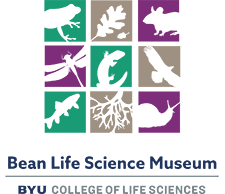Files
Download Full Text (11.5 MB)
Description
Abstract
This summary of Utah's plant endemics is based large part on a paper dealing with differences and similarities of the Great Basin and Colorado Plateau presented by Welsh to a meeting of the Range Society of America at Montrose, Colorado, in May of 2004, and a second presentation to the Colorado Native Plant Society in September of 2007. Discussed in those presentations were brief considerations of topography and geomorphology, geology, hydrology, vegetation, migrational aspects, endemics and disjuncts, and peculiar habitats of plants in the Great Basin of Utah and in the Colorado Plateau. This work expands on those considerations in greater depth, but is especially related to plant endemism in six main geoendemic areas of Utah: 1) Uinta Mountains; 2) Northern Uplands (the Wasatch Mountains ranges); 3) Southern Plateaus, which are bipartite, consisting of essentially flat-topped early Tertiary limestones that serve as a platforms for mountains formed by later Tertiary igneous volcanics; 4) Green River – Colorado River basins and subunits, a) Green River extension, b) Uinta Basin—Tavaputs Plateau, c) Navajo Basin or Canyonlands, d) Dixie Divide, and e) Virgin Basin; 5) Basin & Range—Mohave proper (Beaver Dam drainage); and 6) Great Basin and subunits a) Valleys and b) Ranges.
Also considered are those Utah endemics that lap from the boundaries of present day Utah into adjacent basins of other states, or from them into Utah. Practically all of the extra-Utah endemics would have been included within the state (Figure 2) had not its historical boundaries been reduced in a four decade fight by the federal government to subdue polygamy in the Mormon territory of Utah.
A brief historical account of botanical exploration is given for each of the geoendemic areas, with names of the botanists and many of their discoveries listed also. Thus, type specimens that formed the basis of names of new taxa collected by the various botanists are cited also. Holotypes and isotypes (occasional paratypes) present in the Stanley L. Welsh herbarium at BRY are included within parentheses following the name of the taxon. Type specimens of Utah endemic taxa known to exist in other herbaria are cited also, and most have been examined by one or both of the authors as indicated by an exclamation point (!) following the acronym of the herbarium. Appendix I cites the numbers of type specimens named from Utah counties and various geoendemic areas, and also gives the endemic taxa known for Utah by geoendemic area.
Many of the type specimens presently at BRY were obtained from herbaria visited by Welsh, Atwood, and other students of the flora, when involved with research on the flora of Utah. In some herbaria more than a solitary sheet for a type collection(i.e., a duplicate of the type) was present. Through the graciousness of the curators it was possible to have a duplicate sheet selected for exchange with the herbarium at Brigham Young University (BRY). Duplicate type specimens were obtained in that manner from the New York Botanical Garden, U.S. National Museum, Rocky Mountain Herbarium, and Rancho Santa Ana Botanical Garden. Thus, the herbarium at BRY has a smattering of early collected type specimens that would not otherwise be available for study in Utah.
Table of Contents
Preface to the Second Edition
Abstract
Key words
Prologue
Dedication
Geologic Map of Utah
Utah’s Geoendemic Areas
Introduction
Geoendemic Areas
Phytogeographic Sectors as an Overlay
Utah Endemics (strictly or essentially)
Cross Boundary Utah Geoendemic Overlap Areas: Taxas by Sector
Plant Taxa Overlap from Basins of States Adjacent to Utah
Endemic Species by Geological Formation
Addendum
Acknowledgments
References
Appendix
Index to Personal and Scientific Names and Selected Geoendemic Areas
Publication Date
2018
Publisher
Monte L. Bean Life Science Museum, Brigham Young University, Provo, Utah
Keywords
Utah, botany, geoendemic areas, plant endemics, history, type specimens
Recommended Citation
Welsh, Stanley L. and Atwood, Nephi Duane, "Plant Endemism and Geoendemic Areas of Utah" (2018). Books by Faculty of the Monte L. Bean Life Science Museum. 35.
https://scholarsarchive.byu.edu/mlbm/35


